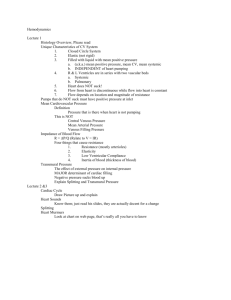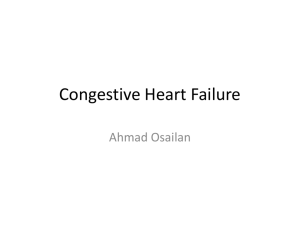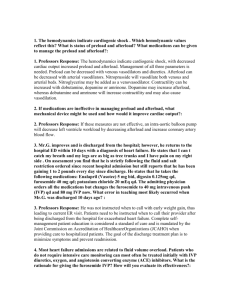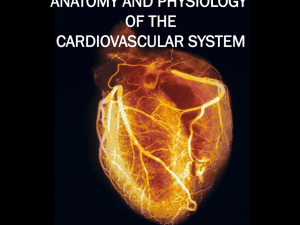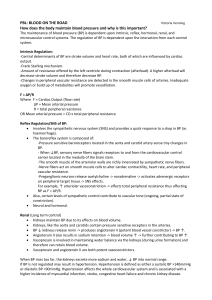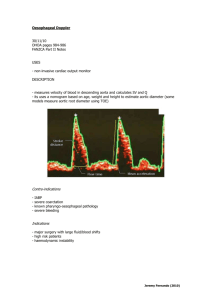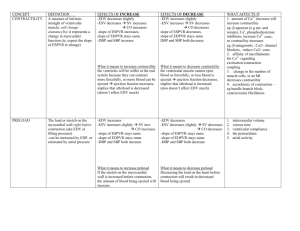AFTERLOAD
advertisement
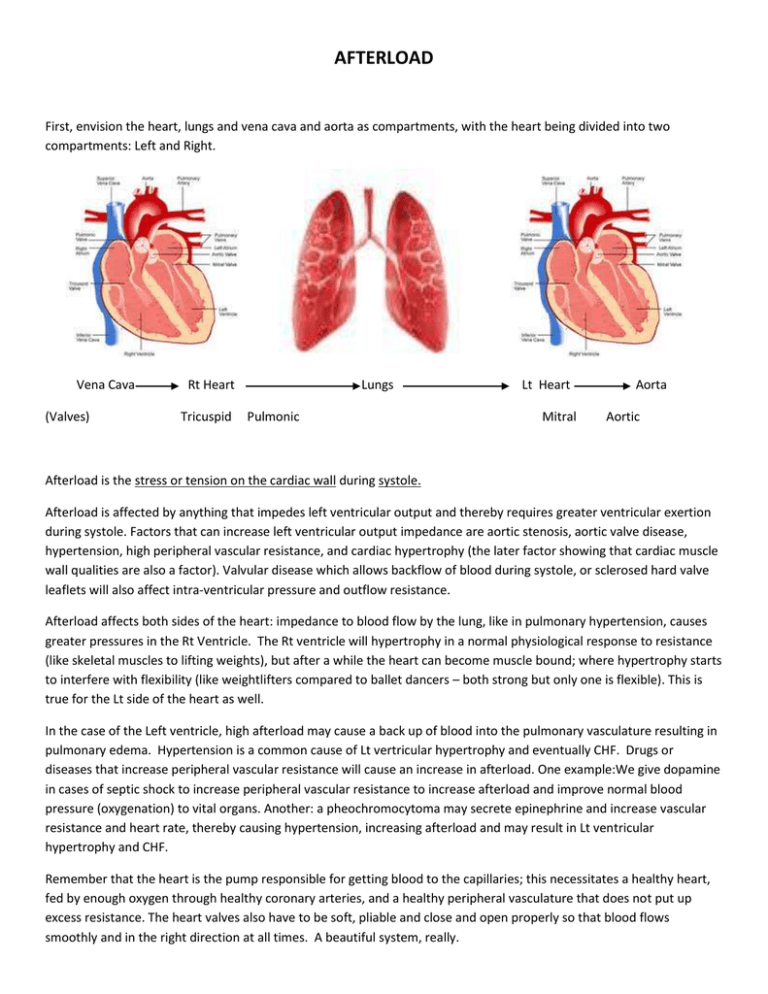
AFTERLOAD First, envision the heart, lungs and vena cava and aorta as compartments, with the heart being divided into two compartments: Left and Right. Vena Cava (Valves) Rt Heart Tricuspid Lungs Pulmonic Lt Heart Mitral Aorta Aortic Afterload is the stress or tension on the cardiac wall during systole. Afterload is affected by anything that impedes left ventricular output and thereby requires greater ventricular exertion during systole. Factors that can increase left ventricular output impedance are aortic stenosis, aortic valve disease, hypertension, high peripheral vascular resistance, and cardiac hypertrophy (the later factor showing that cardiac muscle wall qualities are also a factor). Valvular disease which allows backflow of blood during systole, or sclerosed hard valve leaflets will also affect intra-ventricular pressure and outflow resistance. Afterload affects both sides of the heart: impedance to blood flow by the lung, like in pulmonary hypertension, causes greater pressures in the Rt Ventricle. The Rt ventricle will hypertrophy in a normal physiological response to resistance (like skeletal muscles to lifting weights), but after a while the heart can become muscle bound; where hypertrophy starts to interfere with flexibility (like weightlifters compared to ballet dancers – both strong but only one is flexible). This is true for the Lt side of the heart as well. In the case of the Left ventricle, high afterload may cause a back up of blood into the pulmonary vasculature resulting in pulmonary edema. Hypertension is a common cause of Lt vertricular hypertrophy and eventually CHF. Drugs or diseases that increase peripheral vascular resistance will cause an increase in afterload. One example:We give dopamine in cases of septic shock to increase peripheral vascular resistance to increase afterload and improve normal blood pressure (oxygenation) to vital organs. Another: a pheochromocytoma may secrete epinephrine and increase vascular resistance and heart rate, thereby causing hypertension, increasing afterload and may result in Lt ventricular hypertrophy and CHF. Remember that the heart is the pump responsible for getting blood to the capillaries; this necessitates a healthy heart, fed by enough oxygen through healthy coronary arteries, and a healthy peripheral vasculature that does not put up excess resistance. The heart valves also have to be soft, pliable and close and open properly so that blood flows smoothly and in the right direction at all times. A beautiful system, really. Afterload, and things determining afterload, are represented in the following diagram. Norton, J. (2001). Toward consistent definitions for preload and afterload. Advanced Physiologic Education, 25, 53-61 Retrieved from http://advan.physiology.org/content/25/1/53/F2.large.jpg Clinically, we treat afterload by controlling blood pressure, providing rate control when necessary to maintain good oxygenation of the heart muscle (remember that coronary vessel filling occurs during diastole), and by remodelling the heart with betablockers, and by providing cardiotonics like digoxin that improve contractiility. Valve replacements and heart or lung transplants may also be used.
